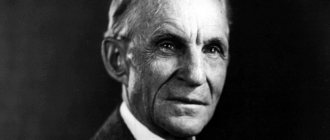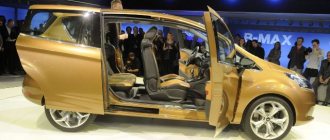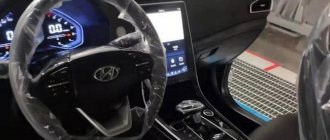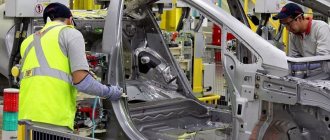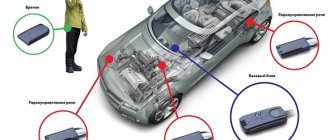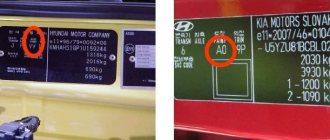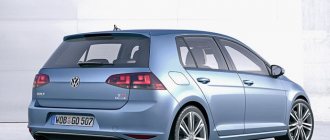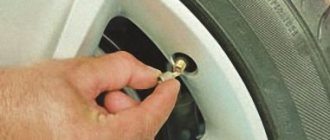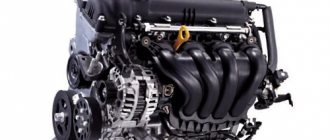Story
has come a long way from a small repair garage to the largest automobile holding company in South Korea. Own cars from Hyundai did not appear immediately. Initially, the plant specialized in the production of machine tools, small ships, and locomotives. A little later, production of Ford cars was launched on the assembly line, which prompted management to create their own model under the Hyundai brand. The manufacturing country had the opportunity to sponsor a young enterprise, which began intensively developing a new model.
In 1976, the Hyundai Pony was introduced, which was created jointly with the Mitsubishi corporation. The model featured a modern design and original design solutions. After some time, the car began to be sold in foreign markets under the name Exel.
It gained wide popularity around the world in the early 1990s. It was at this time that famous models were released: “Sonata”, “Accent”, “Galloper”, “Elantra”. Sales volumes grew steadily. According to mid-1995 data, a little more than one million cars were exported to the American market.
Today, the company stands firmly on its feet and produces models under its own Hyundai brand. The country of origin of the main models is Korea. Additionally, the capacities of automobile plants in Russia, Turkey, Brazil, the USA, China, the Czech Republic, and India are used. At the time of 2010, it was officially recognized as the fifth largest automobile plant producing its own brand of cars.
Where are cars made?
Hyundai cars are produced in car factories around the world. However, it is worth highlighting the largest conveyors:
- Ulsan, South Korea. This plant is the largest and is responsible for the production of more than 70 percent of the total number of cars supplied to domestic and foreign markets. The main capacities for the production of spare parts are also concentrated here.
- Russia, Saint-Petersburg. A modern plant that began operations in 2010. Here, the assembly of units and components is carried out, which are supplied directly from Korea. As of 2020, conveyor automation reaches more than 80 percent, which is an excellent indicator and eliminates most human errors. This car plant assembles the lion's share of cars under the Hyundai brand in Russia.
- Türkiye. This plant was the first to open outside its country in 1998. Today this conveyor is one of the most powerful and is actively engaged in the supply of cars and spare parts.
- Models are assembled in smaller batches at factories in China, the Czech Republic, India, the USA, and Brazil.
Hyundai, a country that produces parts and finished vehicles, does not have a negative impact on the final quality. Supervision and management of production facilities is carried out by company representatives from Korea. All employees undergo accreditation and mandatory training in all the intricacies and secrets of the automaker.
How to find out the country of assembly
Another country producing this crossover model is the USA. Cars are assembled here for Canada, South America and the domestic market. Czech and Slovak assembled cars are supplied to the European market. China assembles cars for its domestic market; their cars are not sent for export. Today, many car owners do not buy a Hyundai ix35 crossover if they do not know where it came from. If you want to know where the Hyundai ix35 was produced, check it using a special VIN code on any decryption site. Also, following the designation, you will find out the country of assembly:
- U - Korean production (Ul-San);
- L- Slovak assembly (Zilina);
- J - Czech assembly (Nosovica).
In Russia there are still Korean-made crossovers from earlier periods of model assembly, but only in small quantities. Owners of real “Koreans” claim that soft plastic was used when assembling the car. Some are unhappy with the increased gap between the body and the bumper. On Czech-assembled crossovers, the suspension geometry was transformed and the steering knuckles were redesigned. Also, the manufacturer has corrected the subframe in the updated model, thanks to which the driver will not feel vibration during the trip. The owners say that on a flat road surface in the “Sport” mode the car is very comfortable to drive, which cannot be said about the “Standard” version.
The lineup
For 2020, the following models are presented in Russia:
- Tucson;
- Santa Fe;
- H-1;
- Solaris;
- Sonata;
- Genesis;
- Creta;
- Elantra;
- i40;
- ix35;
- i30;
- Veloster;
- Equus.
All versions of cars are available in different colors and trim levels. In most car dealerships, only popular models are available: Solaris, Creta, Sonata, Santa Fe, Tucson, ix35. Often, when purchasing a rare Hyundai version, you have to wait more than two months for delivery.
New products
The Russian plant is constantly striving to develop, so this company recently offered about five options for different car models. Hyundai Solaris has become the fourth generation of Accent, popular among Russian car enthusiasts. The name of the third generation, known to Russians as “Verna”, was remembered and went down in history as an unsuccessful project.
Chinese Solaris manufacturers began calling their cars Hyundai Verna. They have this vehicle equipped with red interior lighting, slightly modified interior elements and a colored front bumper and headlights.
HMMR is one of the largest automobile manufacturers in Russia, producing 200,000 vehicles per year. The plant is equipped with modern industrial automation equipment, including 185 robots, and has created about 7,000 jobs in the region. The St. Petersburg plant achieved 46% localization with the cooperation of local suppliers.
Hyundai ix35. Short description
Hyundai ix35, country of origin – South Korea. However, versions from the Czech Republic and China were often found on sale. This crossover is one of the most popular on the Russian market due to its optimal price, high quality and rich interior content. Power plants available for purchase:
- Petrol 2.0-liter. Maximum power – 150 horsepower.
- Diesel with a power of 136 and 184 horsepower, depending on the configuration.
The model is equipped with all-wheel drive or front-wheel drive. The transmission is available manual or automatic. The cost of the basic version is 1,199,000 rubles.
Description of the popular Tucson crossover
Hyundai Tucson, country of origin – South Korea, Czech Republic, Türkiye. Most often there are specimens on sale that come from the Czech Republic; it is from this plant that direct deliveries are made to Russia.
A popular power plant in Russia is a 2.0-liter gasoline unit with a maximum power of 150 horsepower and a pleasant consumption of 10.9 liters in city traffic.
Transmission type is divided into manual and automatic. Versions with all-wheel drive and front-wheel drive are available. The price of a mid-spec crossover will be around 1,800,000 rubles.
Engines for Hyundai Solaris
Unlike the Hyundai Solaris, this car has a completely different story. She showed herself. As one of the most reliable power plants in terms of operation. Eight years of presence in global automotive markets – and only three units under the hood.
| Marking | Type | Volume, cm3 | Maximum power, kW/hp |
| G4FA | petrol | 1396 | 79/107 |
| G4FC | —:— | 1591 | 90/123 |
| G4LC | —:— | 1368 | 74/100 |
With presence in other models everything is just as simple. The G4LC motor is completely new. It is designed specifically for use in the Hyundai Solaris and new compact KIA models. Two engines from the Gamma line, G4FA and G4FC, were tested as the main powerplants for the i20 and i30 intermediate hatchbacks. In addition, they were installed on top Hyundai models - Avante and Elantra.
The base engine of the Kappa series for the new generation of Korean cars of the KIA and Hyundai brands was designed and put on the assembly line in 2020. We will talk about the latest development, a unit with G4LE coding, designed to comply with European environmental standards Euro 5. The motor is specially created for use in power plants of medium and compact models of KIA cars (Rio, Ceed JD) and Hyndai Solaris.
More on the topic: What kind of oil should be poured into the Hyundai Solaris
The injection engine with distributed fuel injection has a displacement of 1368 cm3 and a power of 100 hp. Unlike the G4FC, it has a hydraulic compensator. In addition, the phase regulators are installed on two shafts (Dual CVVT), the timing drive is advanced - with a chain instead of a belt. The use of aluminum in the manufacture of the block and cylinder head significantly reduced (up to 120 kg) the total weight of the unit.
In terms of fuel consumption, the engine brings the most modern Korean car as close as possible to the best world standards:
- in the city - 7.2 liters;
- outside the city - 4.8 l.;
- combined - 5.7 l.
G4LC has a number of interesting design features:
- The VIS system, with the help of which the geometric dimensions of the intake manifold are changed. The purpose of its use is to increase the torque.
- MPI distributed injection mechanism with injectors inside the manifold.
- Refusal to use short connecting rods in order to reduce loads on a not very powerful engine.
- The crankshaft journals are narrowed to reduce the total weight of the engine.
- In order to increase reliability, the timing chain has a plate structure.
To top it all off, Kappa engines are much cleaner than the vast majority of rivals from FIAT, Opel, Nissan, and other automakers: CO2 emissions are just 119 grams per kilometer. It weighs 82.5 kg. This is one of the best performance indicators in the world among mid-displacement engines. The main parameters of the unit (toxicity level, speed, process of formation of the fuel mixture, etc.) are controlled by a computer with an ECU consisting of two 16-bit chips.
Of course, a short service life does not give rise to the identification of characteristic malfunctions. But one “minus” still appears on various forums from owners of cars with the G4LC engine: it is noisy, compared to older lines of Hyundai units. Moreover, this applies both to the operation of the timing belt and injectors, and to the general noise level from the operation of the power plant while the vehicle is moving.
Tired of paying fines? There is an exit!
Forget about fines from cameras! An absolutely legal new product - Traffic Police Camera Jammer, hides your license plates from the cameras that are installed in all cities.
More details at the link.
- Absolutely legal (Article 12.2);
- Hides from photo and video recording;
- Suitable for all cars;
- Works through the cigarette lighter connector;
- Does not cause interference to radios and cell phones.
Compact crossover Hyundai Creta
Hyundai Creta, country of origin – Russia. There are also versions from the USA and China. The assembly of the crossover at a Russian automobile plant made it possible to reduce the final cost of the crossover and make some changes in the form of a reinforced starter and battery.
There is a choice of front- and all-wheel drive versions with two types of engines. The base version includes a manual transmission with a 1.6-liter engine and front-wheel drive. Engine power is 123 horsepower. The 2.0-liter version produces 149 horsepower and comes only with all-wheel drive and an automatic transmission. The price starts at 760,000 rubles.
The most successful model is Solaris
This car became the best-selling car in the history of the Hyundai brand. The country of origin is Russia, which allowed us to set a competitive price and successfully conquer the market. This model can be found in almost every yard. Sedans and hatchbacks are widely used in taxis, delivery services and as a family car.
There are 1.4 and 1.6 liter engines to choose from. The 1.4-liter unit produces 100 horsepower, and the 1.6-liter unit produces 123. Transmissions are divided into 5-speed manual and 6-speed automatic. The cost of the basic configuration starts at 680,000 rubles.
The most popular engine for Hyundai Solaris
Gamma engines divide this line almost in half, but still, the G4FC engine “withstood” a little more configurations. They are very similar to each other. The FC engine was “increased” in displacement from 1396 to 1591 cubic centimeters, increasing the free stroke of the piston. The year of birth of the unit is 2007. The assembly place is the Hyundai automobile plant in the capital of China, Beijing.
More on the topic: Do-it-yourself high-quality noise insulation for Hyundai Solaris
Inline four-cylinder fuel-injected engine producing 123 hp. designed to meet Euro 4 and 5 environmental standards. Fuel consumption (for the option with a manual transmission):
- in the city - 8.0 l.;
- outside the city - 5.4 liters;
- combined - 6.4 l.
The motor has a number of design features characteristic of modern Korean engines:
- distributed injection of the MPI type (multipoint multi point injection);
- the cylinder block and head are made of light and durable aluminum alloy;
- plastic intake manifold;
- two camshafts (DOHC);
- chain drive with tensioner in the timing mechanism.
Unlike many other modern designs, in the G4FC the designers installed the valve timing control on only one shaft, the intake.
Of particular interest is the multipoint distributed injection system installed in the engine. It has five main structural elements:
- Throttle valve.
- Ramp (main) for fuel distribution.
- Injectors (nozzles).
- Air consumption (or pressure/temperature) sensor.
- Fuel regulator.
The operating principle of the system is quite simple. The air passes through the atmospheric filter, mass flow sensor and throttle valve into the intake manifold and engine cylinder passages. Fuel comes to the injectors through a ramp. The proximity of the intake manifold and injectors minimizes gasoline losses.
Control is carried out using the computer. The computer calculates the mass fractions and quality of the fuel mixture based on load, temperature, engine operating conditions and vehicle speed. The result is electromagnetic pulses for opening and closing the injectors, supplied at a certain moment from the control unit.
MPI injection can operate in three modes:
- simultaneously;
- in pairs;
- individually.
The advantages of this fuel injection scheme include efficiency and full compliance with environmental standards. But those who prefer to buy a car with an MPI engine should forget about dashing high-speed driving. Such engines are much more modest in terms of power than those in which the operation of the fuel system is organized according to the principle of direct supply.
Another “minus” is the complexity and high cost of the equipment. However, in terms of the ratio of all parameters (ease of use, comfort, cost, power level, maintainability), this system is optimal for domestic motorists.
For the G4FC, Hyundai has set a fairly low mileage threshold - 180 thousand km (10 years of operational use). In real conditions, this figure is much higher. Various sources provide information that Hyundai Solaris taxis cover up to 700 thousand km. mileage A relative disadvantage of this engine is the lack of hydraulic compensators as part of the timing mechanism, and the need to adjust the valve clearances.
Overall, the G4FC proved to be an excellent motor: light in weight, inexpensive to maintain and unpretentious. However, it is worth considering that from the point of view of major repairs, this is a one-time item. All that can be done on it is plasma spraying of cylinders and boring to the nominal size. However, is it necessary to think about what to do with an engine that can easily “travel” half a million kilometers is a rhetorical question.
More on the topic: Growing up with the second generation Hyundai Solaris sedan. Test drive hyundai solaris - DRIVE
Owner reviews
Car owners are generally satisfied with their purchase. Korean cars delight customers with a modern design, high-torque engine, and sharp steering.
The engines are capable of driving more than 300,000 kilometers with timely maintenance and replacement of all necessary consumables. However, the suspension cannot please you with such figures. Russian roads quickly render stabilizer struts, steering rods and ball joints unusable. In practice, there are cases when steering rods began to knock after 30,000 kilometers.
When buying a used car, you need to inspect the body for poor quality repairs and the general condition of the chassis. The engine and transmission will not cause problems.
